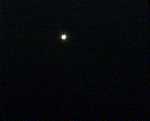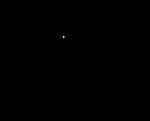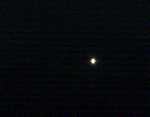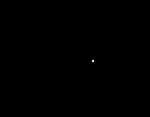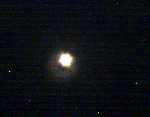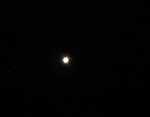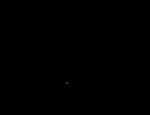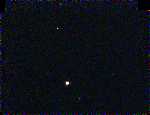Barnard's Star
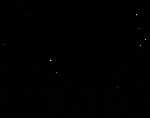 |
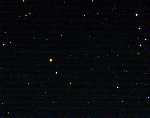 |
| Imax=1000 | Imax=100 |
6 exposures, 10s each 9/25/08 Lake San Antonio, CA
This is the second-closest star system to our own, and the closest one that is observable from our latitude. This is a red dwarf star, with only 1/2500th the luminosity of the Sun. Distance: 5.94 ly (compared with 4.22 ly for Proxima Centauri). Magnitude: 9.54. Spectral type: M5. In this image, it is the bright orangish spot to the left of center.
Barnard's Star
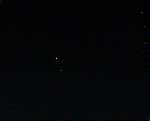 |
| Imax=1000 |
52 exposures, 1s each 9/25/08 Lake San Antonio, CA
Same as above except for shorter exposure.
Barnard's Star, 3X
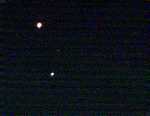 |
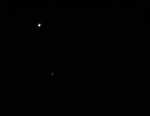 |
| Imax=50 | Imax=500 |
6 exposures, 10s each 9/25/08 Lake San Antonio, CA
This image was obtained using a 3X Barlow to get the best possible resolution as needed for a parallax measurement. The elongation is probably due to tracking errors.
Barnard's Star, 3X
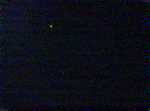 |
| Imax=500 |
59 exposures, 1s each 9/25/08 Lake San Antonio, CA
Also with 3X Barlow, shorter exposures. Again there is some elongation, but at least the disk is smaller. It might be possible to do better with some changes to the image processing, by rejecting images with large spot sizes, or by processing the different colors separately.
Barnard's Star
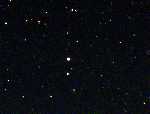 |
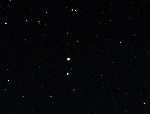 |
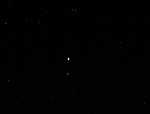 |
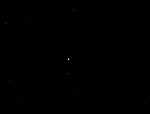 |
| Imax=50 | Imax=100 | Imax=500 | Imax=1000 |
24 exposures, 10s each 9/19/09 Lake San Antonio, CA
Updated photo of the Barnard's Star, a nearby red dwarf, one of my targets for proper motion and parallax detection. A quick comparison with last year's image suggests it has moved noticeably, but I have not had a chance to start this analysis yet...
Barnard's Star
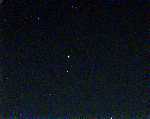 |
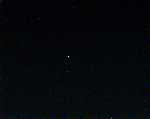 |
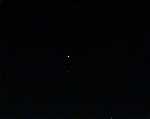 |
| Imax=200 | Imax=500 | Imax=1000 |
59 exposures, 1s each 9/19/09 Lake San Antonio, CA
Another Barnard's star image, shorter exposures to avoid saturation.
Barnard's Star, 3X
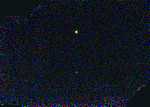 |
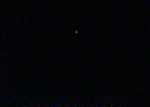 |
| Imax=100 | Imax=500 |
169 exposures, 1s each 9/19/09 Lake San Antonio, CA
Barnard's star using 3X Barlow.
Barnard's Star
 |
| Imax=200 |
121 exposures, 1s each 10/8/10 Lake San Antonio, CA
This is part of my ongoing project to measure a stellar parallax...
Barnard's Star
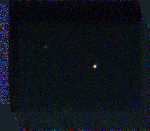 |
| Imax=100 |
297 exposures, 1s each 10/8/10 Lake San Antonio, CA
This is part of my ongoing project to measure a stellar parallax...
Barnard's Star
 |
| Imax=200 |
53 exposures, 1s each 9/3/11 Bonny Doon, CA
This is part of my ongoing project to measure a stellar parallax...
61 Cygni, 3X
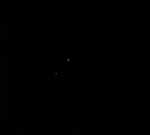 |
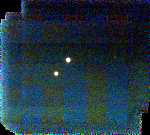 |
| Imax=50000 | Imax=500 |
295 exposures, 0.1s each 9/27/08 Lake San Antonio, CA
61 Cygni is a magnitude 5 double star in Cygnus, famous for being the first star whose parallax was measured. This was accomplished by F. W. Bessel in 1838 using visual observation techniques, before photography existed! Distance: 11.4 ly. Individual magnitudes (A,B): 5.20, 6.05. Luminosities: only 0.065 and 0.038 compared with the Sun. Spectral types (A,B): K5, K7. The image here, obtained using a 3X Barlow, shows some color separation problems that I have noticed before with this camera. These effects tend to occur with very short exposures, especially if the object moves. Also, I cannot rule out that the Barlow could be causing some color effects.
61 Cygni, 3X
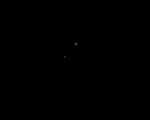 |
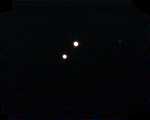 |
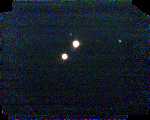 |
| Imax=25000 | Imax=500 | Imax=100 |
198 exposures, 1s each 9/27/08 Lake San Antonio, CA
Same as above but longer exposures. The background stars (needed for parallax measurement) are brighter, but the price is saturation and enlargement of the 61 Cygni disks.
61 Cygni, 3X
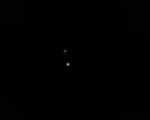 |
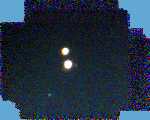 |
| Imax=5000 | Imax=50 |
821 exposures, 1s each 12/29/08 Phoenix, AZ
The resolution here is a lot worse than in my previous sets. To compensate, I took a huge number of exposures in hope that it will still be possible to estimate the star center positions with < 1 arcsec accuracy.
61 Cygni
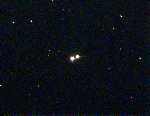 |
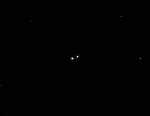 |
| Imax=200 | Imax=2000 |
55 exposures, 1s each 9/17/09 Lake San Antonio, CA
Updated photo of the nearby double star 61 Cygni, one of my targets for proper motion and parallax detection...
61 Cygni, 3X
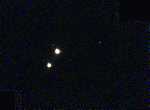 |
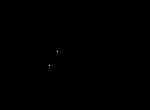 |
| Imax=200 | Imax=20000 |
118 exposures, 1s each 9/17/09 Lake San Antonio, CA
61 Cygni using 3X Barlow lens.
61 Cygni, 3X
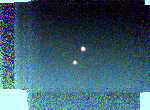 |
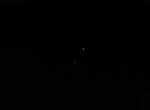 |
| Imax=500 | Imax=50000 |
252 exposures, 0.1s each 9/17/09 Lake San Antonio, CA
61 Cygni using 3X Barlow lens, shorter exposures.
61 Cygni
 |
 |
| Imax=200 | Imax=2000 |
59 exposures, 1s each 10/9/10 Lake San Antonio, CA
This is part of my ongoing project to measure a stellar parallax...
61 Cygni
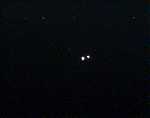 |
 |
| Imax=2000 | Imax=130000 |
267 exposures, 0.1s each 10/9/10 Lake San Antonio, CA
This is part of my ongoing project to measure a stellar parallax...
61 Cygni
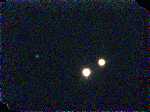 |
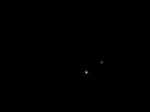 |
| Imax=130 | Imax=13000 |
253 exposures, 0.5s each 10/9/10 Lake San Antonio, CA
This is part of my ongoing project to measure a stellar parallax...
61 Cygni
 |
 |
| Imax=2000 | Imax=130000 |
120 exposures, 0.1s each 9/3/11 Bonny Doon, CA
This is part of my ongoing project to measure a stellar parallax...
